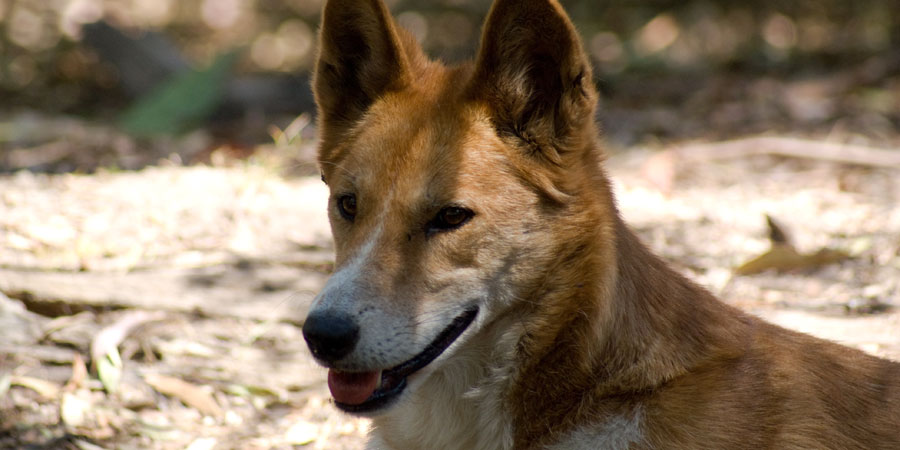

Australian Dingo, Australian Native Dog, Maliki, Warrigal, Noggum, Mirigung, Boolomo
Overview
The 'dingo" (Canis dingo) is a wild canine found in Australia. Its exact ancestry is unknown, but dingoes are classified as their own unique canine species. The dingo is the largest terrestrial predator in Australia, and plays an important role as an apex predator. However, the dingo is seen as a pest by livestock farmers due to attacks on animals. Conversely, their predation on rabbits, kangaroos and rats may be of benefit to graziers.
The Dingo has intense eyes that vary in color from yellow to orange. The very mobile, small, rounded ears are naturally erect. The well furred, appearing bushy, tail is relaxed and has good length. The hindquarters are lean and muscular. The coat is soft. Its length, density, and texture vary according to climate. Typical coat colors are yellow-ginger, but can occur in tan, black or white, including an occasional brindle; albinos have also been seen. All purebred Dingoes have white hair on their feet and tail tip. Unlike most other breeds, Dingoes do not have dewclaws.
| Size | Medium |
| Height | 19-23 inches (48-58.5 cm) |
| Weight | 50-70 pounds (23-32 kg) |
| Lifespan | 16-20 years |
| Colors | Yellow White |
| Origin | Australia |
| Classification | Purebred |
| Good Lapcat |
| Good In Apartments |
The Dingo is not recommended for apartment life. They are wild dogs that if taken into a family, must not be chained up in a backyard, but should be taken in as part of the family. A securely fenced enclosure is a must. A Dingo needs activity and space. As pets they should not be taken off the leash in a park. They can withstand hot climates. |
| Good With Children |
|
| Good With Dogs |
|
| Good With Cats |
|
| Exercise Needs |
The Dingo is an undomesticated animal that should get plenty of exercise. When in captivity they need to be taken on a daily, long walk or jog, to satisfy their natural migration instinct, where the dog is made to heel beside or behind the person holding the lead, never in front, as in a dog's mind the leader leads the way and that leader needs to be the human. |
| Trainability |
|
| Affectionate |
|
| Playfulness |
|
| Grooming Requirements |
The Dingo's weather-resistant coat takes care of itself. This breed has no doggie odor. |
| Shedding |
Moderate Shedding: Routine brushing will help. Be prepared to vacuum often! |
| Vocalization/Barking |
Occassional |